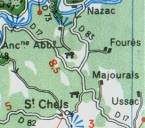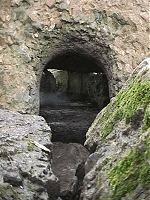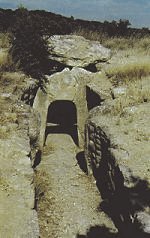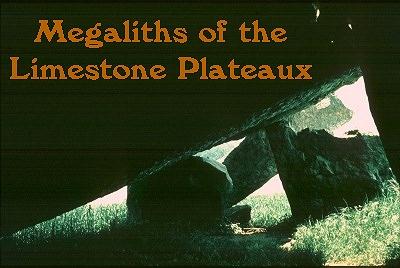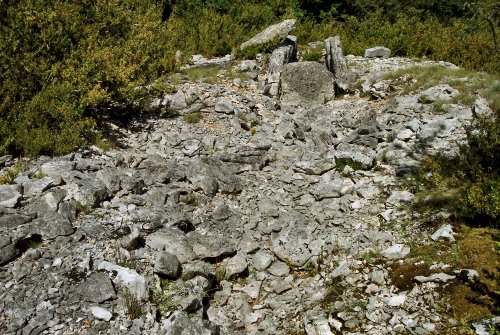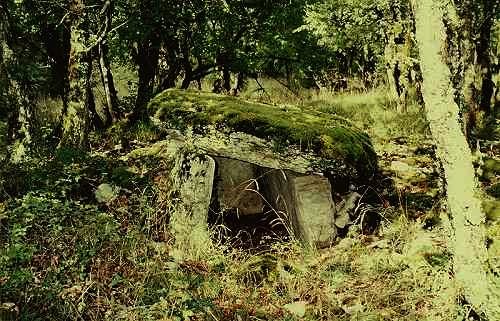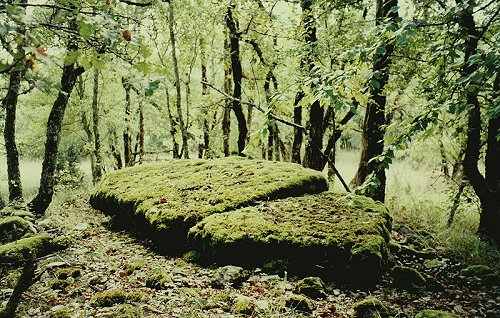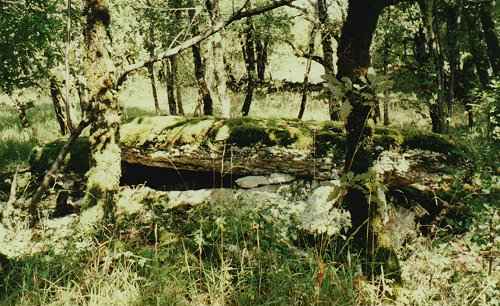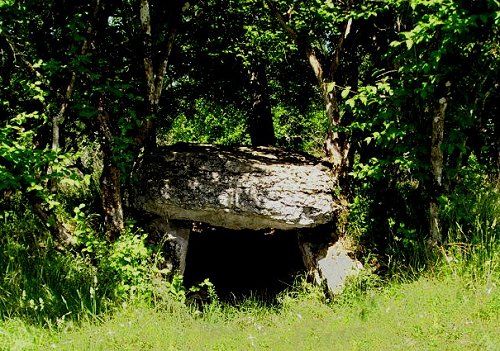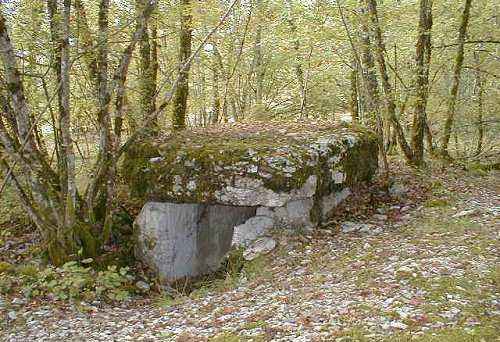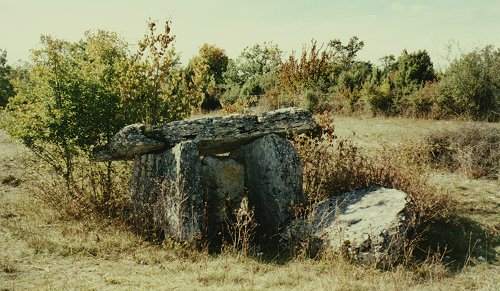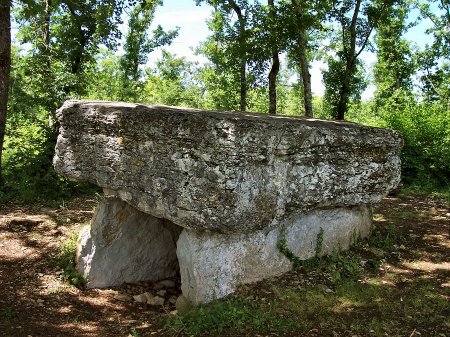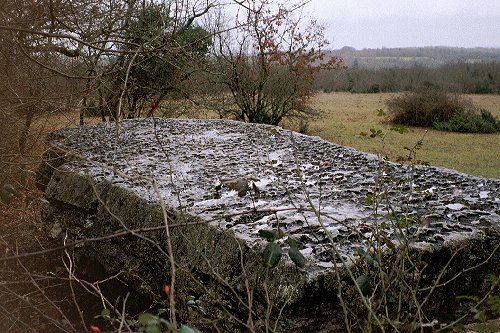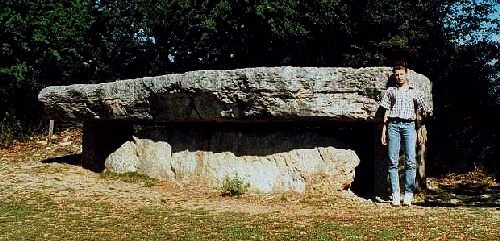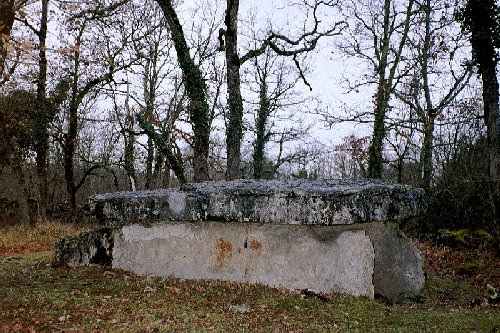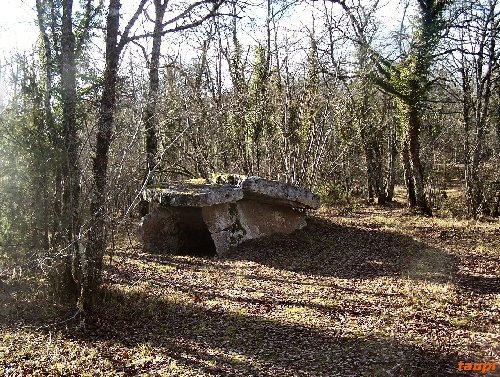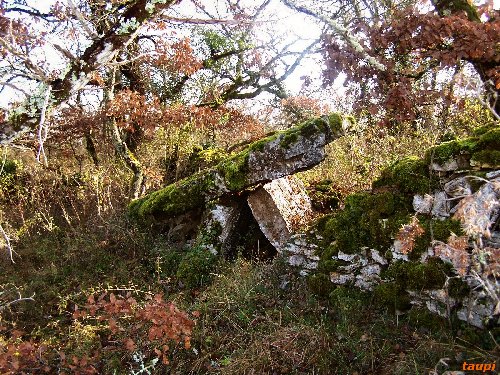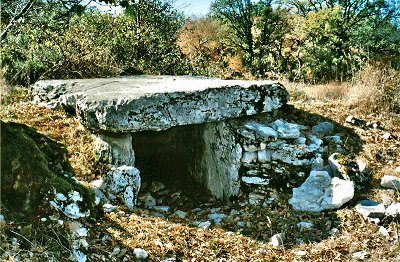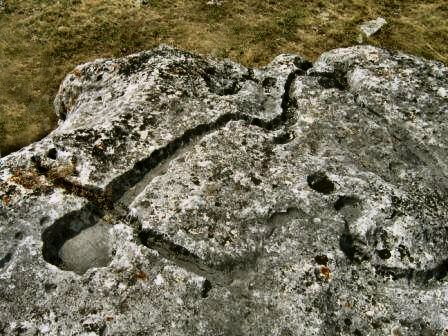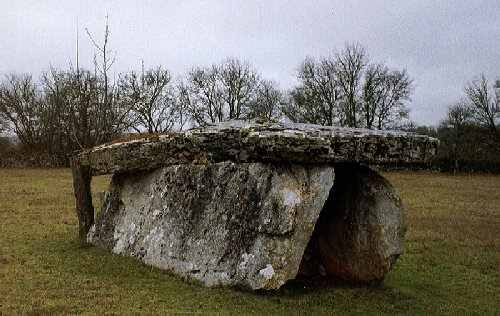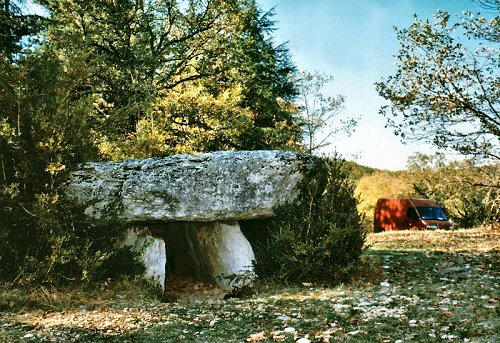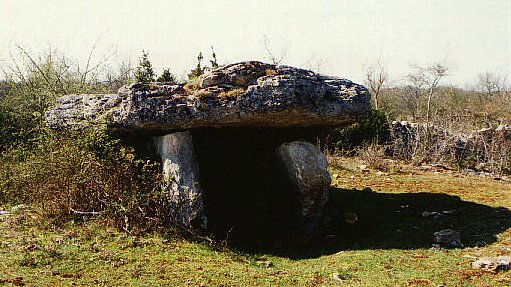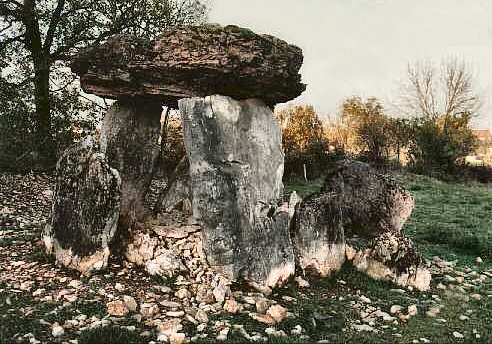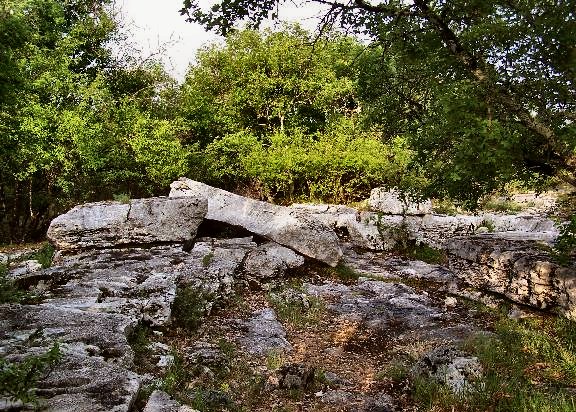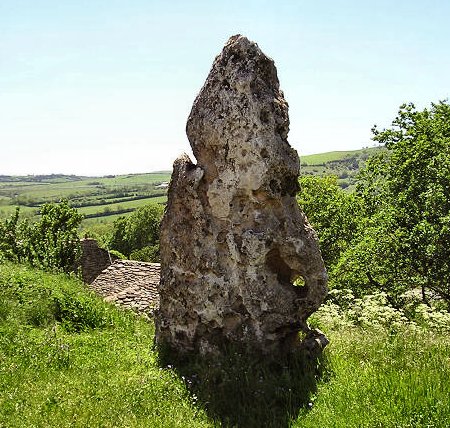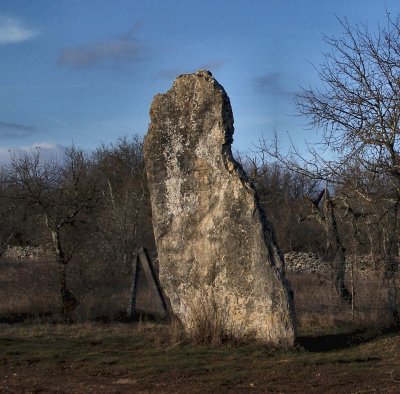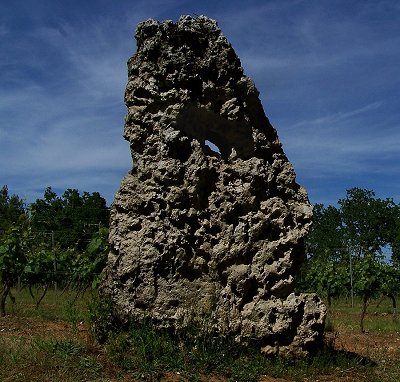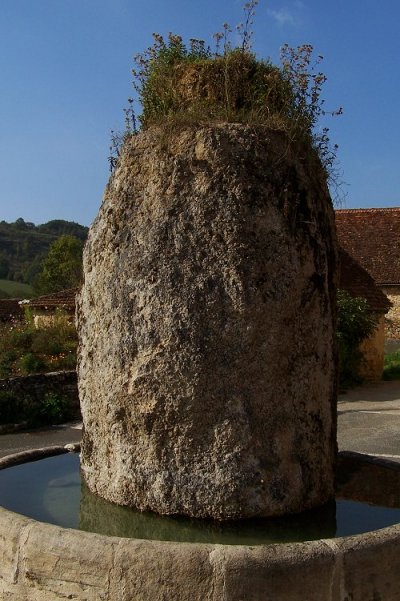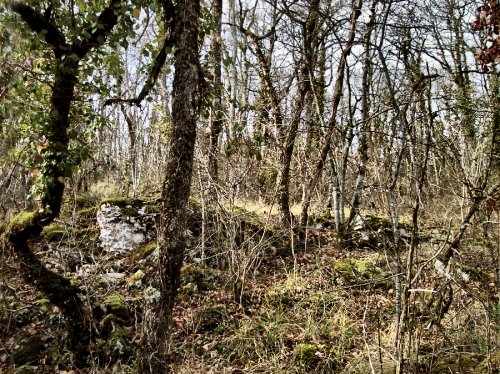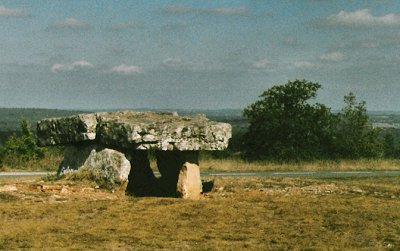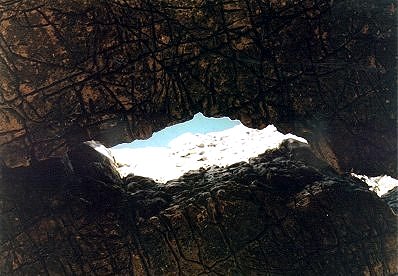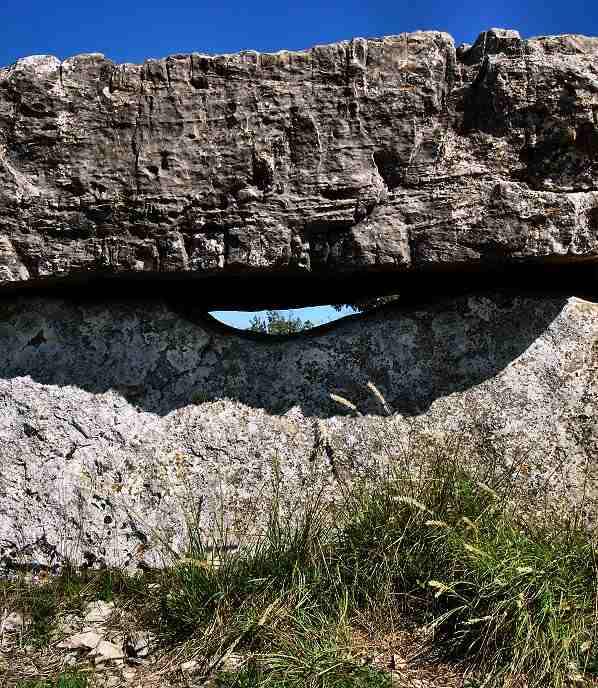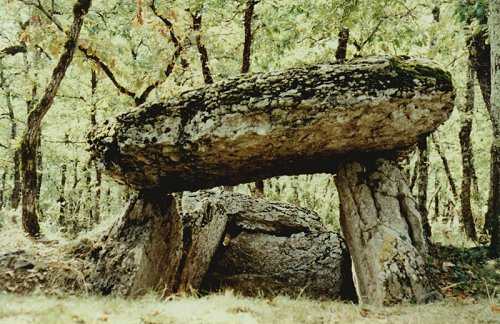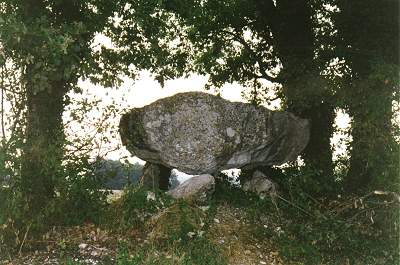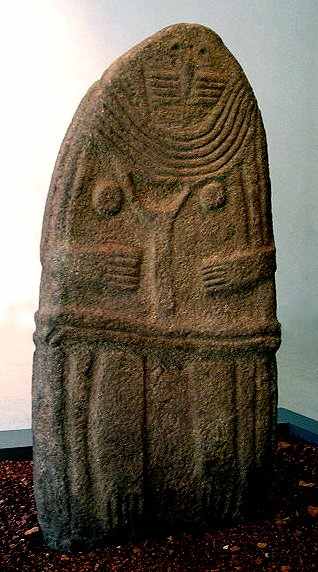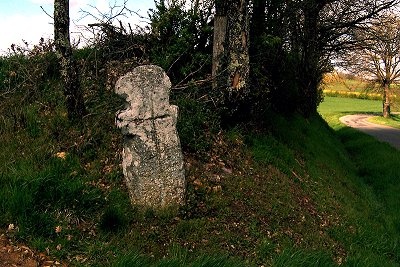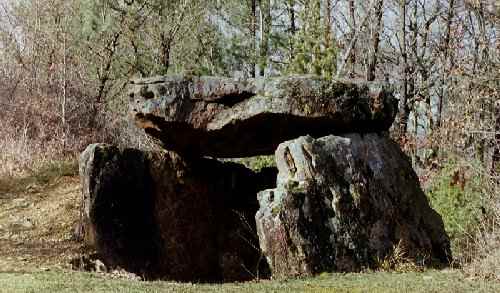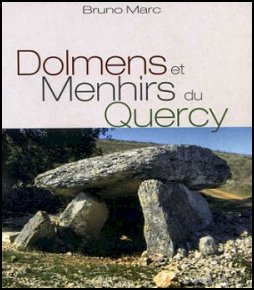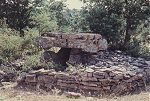|
ireland
the
earth-mother's
Click here to see |
|
High
up on the vista-rich watershed 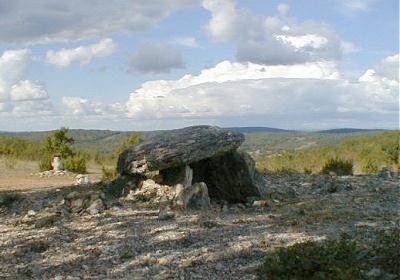 click for more pictures Dolmen de Pégouriés or de Pech Laglaire, Gréalou (Lot) On another causse,
not far away to the West, is another well-exposed tomb, Dolmen de Pieyro Clabado, Larnagol (Lot)
Dolmen de Parra seen from the
rear
Dolmen de Pech Linar (Quatre Routes),
Saint-Jean-de-Laur (Lot)
Dolmen du Lac d'Aurié,
Limogne (Lot) whose roof-slab weighs 18 tonnes.
The quarry from which these slabs were extracted is nearby. A better-preserved and almost as large example (with chamfered semi-porthole and natural perforations in the massive side-stones) is at Roux. Dolmen de Roux, Livernon
(Lot)
Dolmen du Sac de Cuzer, Reyrevignes
(Lot) Another dolmen at Reyrevignes (Lot)
click to see the roofstone which may have been artificially enhanced
Natural or artificial ? Or a bit of both
?
Dolmen de Custalou, Grèzes
(Lot)
Dolmen de la Métairie-Haute,
Saint-Sulpice (Lot)
Dolmen de l'Igue de Planagrèze,
Caniac du Causseretour (Lot)
The impressive remains of the dolmen des
Cloups,
But
really, almost anywhere on the Causses would have provided
...which
of course are not absent either from the département
of the Aveyron ...or
from the département of the Lot.
On the other hand - as already indicated, some tombs have been partially-reconstructed with the aid of concrete. In the case of the Dolmen de Vaour the concrete has been replaced recently with machined stone supports.
Vaour (Tarn)
______________________
The départements of the Tarn and the Aveyron feature the curious megaliths known as Statues-Menhirs, many of which have now been preserved under cover, notably at the Musée Fenaille at Rodez.
However, one curious and atypical example survives by the roadside at La Croix-Salvetat (Tarn). This looks as if it might be a prehistoric, anthropomorphic menhir (forerunner of the statues-menhirs ?) Christianised much later with a crudely-incised cross. On the other hand, it might be a Christian monument, recalling the Irish "face-crosses" and, in particular, the anthropomorphic cross on the rock-monastery of Skellig Michael in county Kerry.
But before you come to it on the trail you pass a megalithic complex which is marked Chaos on the trail, but Menhirs on the map. The complex is neither standing-stones nor chaos, but the amazing remains of three cyclopean tombs known as Los Tres Peyres (Les Trois Pierres), whose salient features are three up-ended capstones some four metres high and broad - which may never have covered the violently disturbed tombs behind them, or which may have been up-ended by a heroic act of vandalism such as occurred at Ballynoe (county Down) in Ireland. These tombs are quite different from others on the causses - and indeed from any I have seen elsewhere.
Click
here to see a group of monuments around Arras
Click here to visit
plus • Dolmens de l'Ardèche (2001) •
Dolmens
et menhirs des Cévennes (2003) |
Enhanced
versions of these pages
are included on the

developed and expanded from this website.
